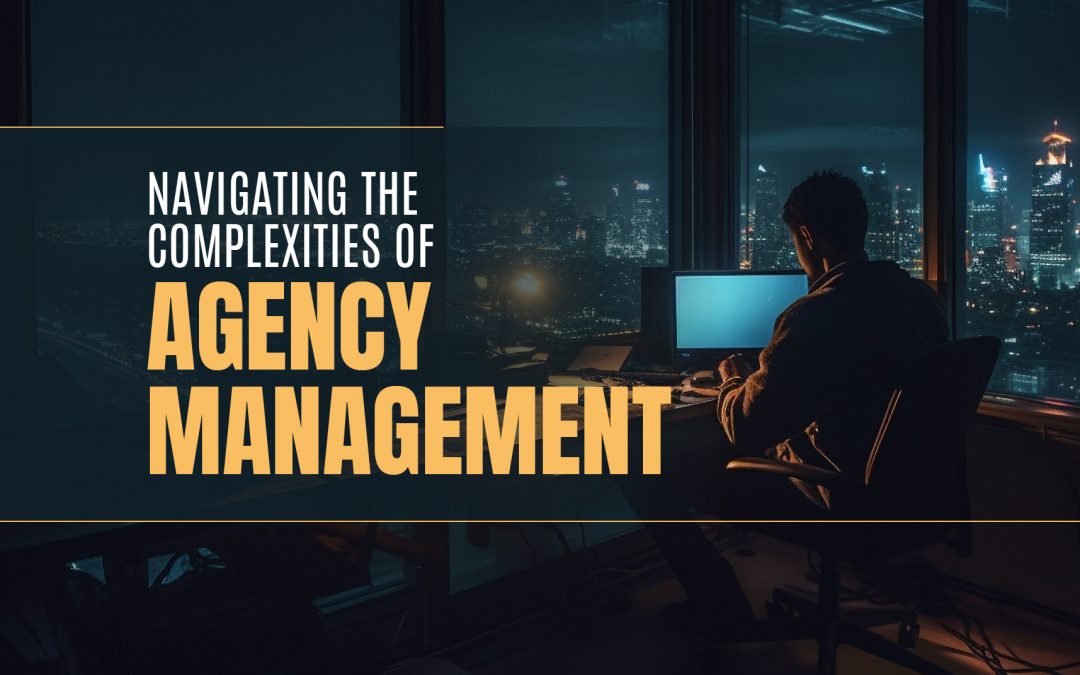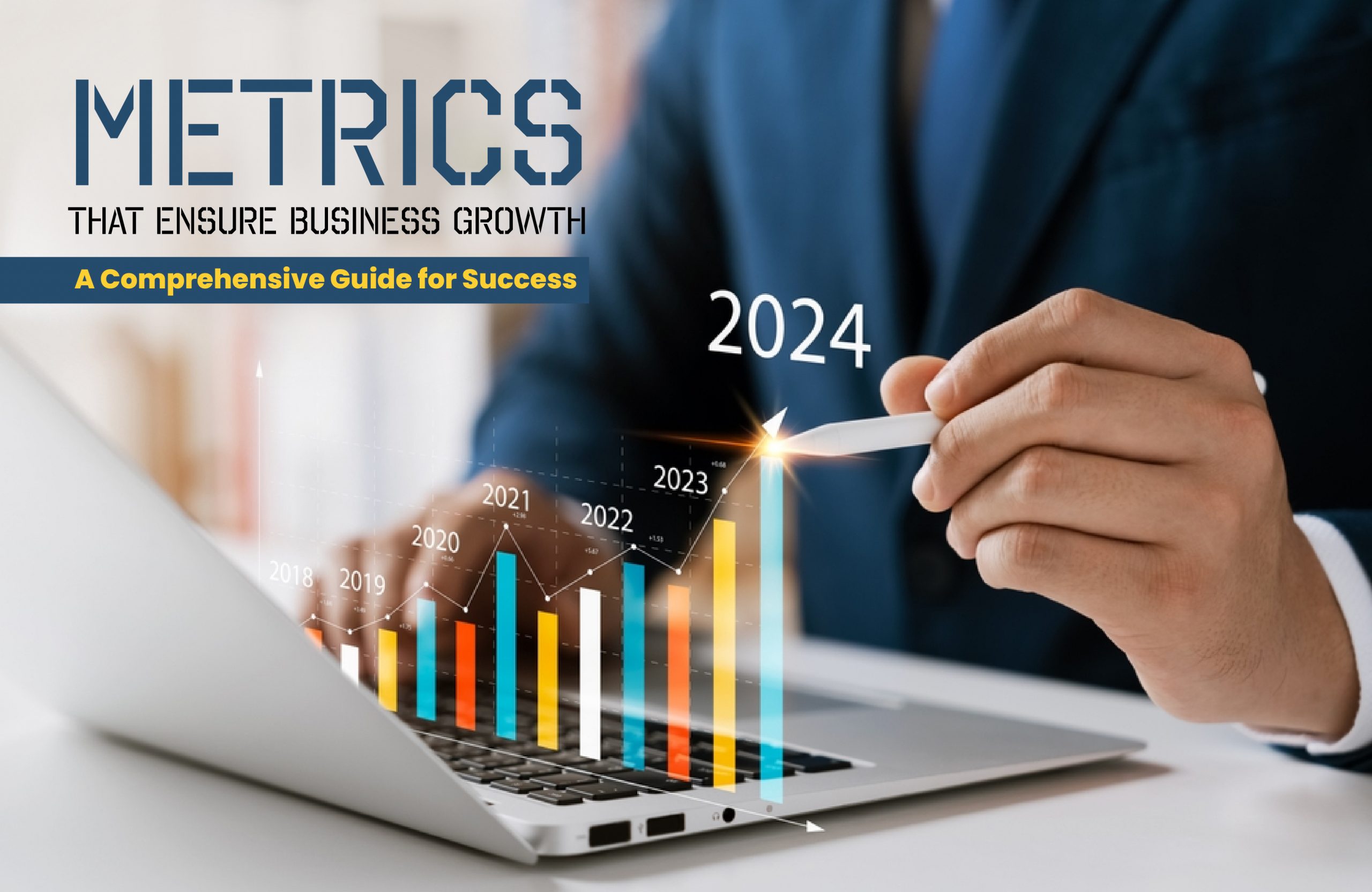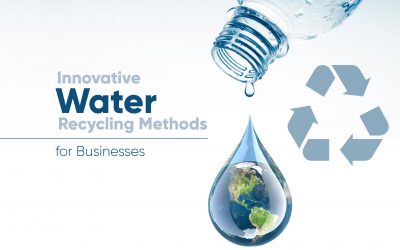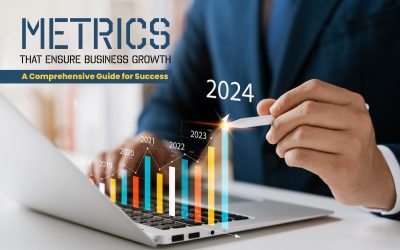Agency management is complex. It is about managing customer satisfaction, resources, and effective communication and critical decision-making. There are a lot of moving parts in the management of a digital agency, as agencies can often be faced with multiple complexities in order to navigate their way to efficiency, growth, and long-term agency success.
What is Agency Management?
Agency management is about managing the operations, projects, and resources within an agency in order to ensure smooth functioning and successful outcomes. It involves client management, project management, resource allocation, and employee development, among other facets. Add in different projects, each with unique requirements, and the complexity of agency management is brought to light.
The complexities of agency management are many, but the most critical among them include managing customers with differing goals and priorities, while also balancing the expectations and capabilities of the agency, optimally allocating resources across projects, and competing priorities and deadlines for multiple projects. These complexities can lead to inefficiencies and roadblocks to successful outcomes, making it critical for agencies to streamline their processes and adopt best practices.
Understanding the Complexities of Agency Management
Identifying the multiple stakeholders choosing agency management tools is one of the most important decisions an agency can make. From the executive team to account, creative and technical teams, each team must play a role in the development and successful execution of achieving client objectives from the product features, user experience, design, security and quality assurance (QA) testing.
Managing multiple stakeholders
Agency projects frequently entail the participation of various stakeholders, encompassing clients, internal personnel, contractors, and external vendors. Each of these stakeholders has different expectations, requirements, and communication preferences. Managing the needs and expectations of multiple stakeholders can be challenging, as it requires coordination, communication, and relationship management across different types of individuals.
Balancing client expectations and agency capabilities
Clients often expect high-quality deliverables within tight timelines and budgets. Delivering to these expectations, while ensuring the agency makes an acceptable level of profit, requires careful resource allocation and client communication. Agencies need to have a clear understanding of their resource capacity, and they must be able to set and manage client expectations effectively, handle issues around scope or any other changes that clients initiate, and communicate these as they arise. Furthermore, it’s important that the agency involves the client in the appropriate decision-making if these changes impact budget and timelines. It’s also not uncommon that clients will require agencies to work closely with their suppliers, such as production or media companies, and they essentially become part of the agency’s “internal” team. Although they are not their direct employees, they require the same level of management and expectations surrounding what they do and when they do it.
Therefore, it must be right, it’s one life, one use and no return! Agencies must have clear visibility of their resource capacity across all these areas and be able to assign, reassign, and pull work if needed to avoid overloading or underutilizing any area of their business. And, as metrics must be reported, gaining that information quickly is critical. Also, most agencies require the professional employment from their resources so, these same resources can work at capacity.
Streamlining Processes for Efficient Agency Management
To navigate the complex landscape of agency management, it is crucial to streamline processes. By optimizing workflows, automating administrative tasks, and using project management and agency management software, agencies can increase productivity, reduce errors, and enhance overall performance.
Assessing and optimizing workflow
Ad hoc task assignment and execution leads to inefficiencies and chaos. By taking the time to evaluate and map out their workflows, agencies can identify bottlenecks, redundancies, and areas for improvement. For example, an audit might reveal that a newly formed digital team is replicating the processes previously built for print advertising, rather than optimizing for the highly segmented and targeted campaigns agencies are now required to create. By mapping out the entire lifecycle of a tasked project, including every team member involved and every task they must complete, agencies can create a blueprint for the most efficient way to execute that project, resource and project manage it, and assure a high level of daily communication between account and project management teams, and project execution team members.
Automating administrative tasks
Many agency staff may be surprised by the amount of time that they spend doing what are essentially administrative tasks. Timesheet management, expense tracking, and invoicing are all administrative tasks; the Administrative Assistant Handbook defines taking minutes, distributing reports, producing graphs or designing surveys as administrative. And for a variety of reasons – such as human error, oversights, or inaccuracies – they can be some of the most problematic jobs. By deploying software that can automatically handle these back office tasks (today’s agency management software typically has extensive back office functionality), agencies can minimize the errors and headaches that result from these tasks, and free staff up to focus on value-added activities like client management and project execution.
Of course, these three tips are only to start. More experienced agency managers will also want to focus on instituting repeatable, sustainable processes, like an agency resource management system that balances workloads and resources; and an agency financial management system that enables project managers to produce on-scope, on-time and on-budget projects. These systems and processes can help reduce the chaos of ad hoc task execution, and enable agencies to enhance performance, reduce errors, and best serve their clients.
Project management software
Project management software provides a centralized platform for planning, organizing, and managing projects. With it, agencies can create project schedules, assign tasks (with deadlines), allocate resources, and monitor and track progress. Project management software also enables collaborative project management, allowing all team members to share, discuss, and collaborate on project tasks. Clients can also refer to project management software to track project status, provide feedback, and access latest project updates.
Agency management software
Also known as advertising agency software, agency management software is tailored specifically to the needs of agencies. It integrates the various aspects of agency operations, including project, resource, client, and financial management. With an advertising agency management software like Function Point, data from all aspects of agency operations are immediately visible; i.e. project status, resource utilization, and financials. This enables agencies to manage by the numbers, instead of by feel, and to manage efficiently.
Enhancing Communication and Collaboration
It goes without saying that effective and timely communication is the very cornerstone of successful agency management. Agencies can enhance productivity, teamwork, and client satisfaction, by: improving internal communications; establishing effective client communication channels (which are critical to client satisfaction and long-term client relationships); fostering collaboration within the agency; and, deploying technology that encourages and enables virtual teams.
In the world of agency, everything goes hand-in-hand, including clients and deadlines. For agency professionals, time is limited and a day can become quite hectic if they aren’t careful. But there are a number of things agency professionals can do to make each day run more smoothly and alleviate workplace stress. Here are three ways agency professionals can work more efficiently and create a seamless work environment for everyone.
Improve internal communication
Internal communication is critical for project execution and team coordination. The adoption of communication tools, like instant messaging platforms, project management software with built-in communication and more, can help employees communicate quickly and seamlessly with teammates.
Scheduling regular team meetings for updates is another effective way to improve communication and transparency in agency life. These meetings provide employees with the opportunity to specify exactly what they need from the rest of their team, address any issues that have arisen and share any tactics that have helped them be as productive and efficient as possible.
Establish effective communication channels with clients
Setting up clear and efficient communication channels with clients is extremely important for managing expectations and building a strong client-agency relationship. Regular check-ins, the use of status reports and sessions on feedback will allow clients to see how the project is coming and to know about any potential changes to the timeline or scope.
Addressing client queries or concerns quickly will also help build their trust and ensure that they are satisfied. This is especially important in the case that a project is not going as planned and requires additional work. Clients that feel out-of-the-loop can become demanding and may cause unnecessary stress for project managers. But, if they have been updated regularly, they are far likelier to be understood. An upwards of 82% of consumers
say that the number one factor that leads to a great customer service experience is having their issues resolved quickly. Prompt email communication can foster healthy client relationships.
Other helpful methods of communication include one-on-one meetings with clients and hosting semi-annual business reviews to ensure that they are continually pleased with the agency team and strategy.
Promote collaboration and knowledge-sharing
Collaboration among team members and sharing knowledge is critical for agency success. Employers should work to create a culture where employees regularly share what is working for them, best practices, and lessons learned.
There are a number of ways to facilitate knowledge exchange in the workplace including cross-functional team collaborations and internal forums. These can aid in knowledge exchange and creative problem-solving when it comes to figuring out how best to approach a client project.
The remote working trend and a rise in virtual teams has remote employees scattered across cities like a digital Jackson Pollock painting. Agencies need to leverage technology to ensure geographically dispersed employees can communicate and collaborate easily. Virtual meeting platforms, cloud-based document sharing, and project management software with remote access features enable employees to communicate, share files, and work together as though they were in the same room, regardless of geographical location.
Leveraging Data for Informed Decision-Making
In today’s data-driven world, agencies have access to unprecedented amounts of information at their fingertips. By leveraging data, agencies can make informed decisions, monitor agency and team performance, and identify areas for improvement. Agencies can develop their data collection and analysis capabilities, monitor and respond to agency performance metrics and key performance indicators, and conduct regular performance reviews. In doing so, agencies can improve their decision-making processes and drive improvement across the company.
Collecting and analyzing relevant data. Agencies should collect and analyze a variety of data, including data related to project performance, resource utilization, client satisfaction, and financial metrics. This information helps agencies identify areas of strength and weakness, and can also unveil patterns or trends that can inform future decision-making.
Utilize data to drive strategic decision-making
Data-driven decision-making can help agencies allocate resources more efficiently, identify project risks, and make informed business decisions. It can show agencies areas where they can streamline processes, optimize where they allocate resources or target specific sectors or markets.
Implement performance metrics and KPIs
Implementing key performance indicators (KPIs) and performance metrics enables agencies to effectively measure and track their progress towards goals. KPIs might include metrics such as project profitability, client satisfaction scores, project delivery time, or the number of successful projects delivered. Regularly tracking these metrics can provide an agency with a clear understanding of how they’re performing and where they could improve.
Conduct regular performance reviews
Regular performance reviews are critical to understanding whether or not your strategies are effective and if any adjustments should be made. By analyzing project outcomes, client feedback, and performance metrics on a regular basis, an agency can determine what’s working and what isn’t. These reviews can be an opportune time to reward or recognize team members who are performing particularly well, as well as to address any performance issues or skill gaps.
Strengthening Client Relationships
Building strong client relationships is critical for an agency’s success. Agencies can encourage repeat business and gain referrals by understanding the needs and expectations of their clients, building trust and rapport, providing unmatched customer service, and handling client feedback like pros. By doing so, they can turn their clients into long-term partners that they love doing business with, and that help contribute to their growth and reputation.
Understanding client needs and expectations
Agencies need to deliver results—period. And to do that, they need to know what their clients want and need. Agencies should go the extra mile to get to know their client’s business goals, target audience, and needs so that they can appropriately align their strategies and deliverables to meet their clients’ expectations. Regular client meetings, surveys, and feedback sessions can be effective ways to get a handle on what an agency’s clients need and expect.
Building trust and rapport
Agencies should always do what they say they’re going to do—whether that means delivering a project on time and on budget or following through on an ROI projection. Building trust is essential to any successful client-agency relationship. In addition to being on the up-and-up at all times, agencies should be sure to be responsive and reliable, maintain open lines of communication, set realistic expectations, and do everything they can to make their clients feel valued. They should always aim to be their clients’ trusted advisor, to whom they can turn to solve their toughest of marketing problems.
The success of our agency management relies on high-performance, client-focused teams. By consistently delivering high-quality work to clients, proactively identifying and resolving potential issues, ensuring clear communications, meeting or exceeding deadlines and going the extra mile, excellent customer service becomes an everyday occurrence that garners satisfied and loyal clients.
Managing Client Feedback and Concerns Effectively
Client feedback serves as a valuable tool for agencies that allows for a glimpse at areas of strength and areas for growth. Agencies should establish processes for prompt and effective capture and management of agency client feedback. Agencies should embrace a commitment to client satisfaction and focus on resolution and thorough follow-up for all client concerns
Investing in Staff Training and Development
With the success of agency management so heavily reliant on the staff’s skill, expertise and professionalism it’s in an agency’s best interest to identify and address staff skill gaps, provide continuous learning and professional development opportunities to staff within the agency, create a culture of innovation and learning in the workplace, and evaluate and assess training programs for effectiveness.
Finding and addressing skill gaps
Agencies need to evaluate the skill sets and knowledge base of their staff and identify gaps that may exist. This can take the form of a performance evaluation process, skills assessment exercises, or simply asking staff for feedback. Once gaps are identified, targeted training interventions, mentorship programs, or professional development opportunities can be provided to help staff enhance their skill set and competencies.
Continuous learning and a culture of professional development are needed
In a rapidly evolving field such as agency management, ongoing learning is necessary to stay ahead. Agencies should invest in affording their staff with opportunities for constant learning ranging from workshops, seminars, industry conferences, and even through online learning platforms. Encouraging staff to pursue professional certifications or academic courses that can make them more effective in their roles ensures that they are as current and trained in the latest and best practices that can help to guide them as they execute on their responsibilities.
Create a culture that values innovation and learning
Organizations must create an environment that rewards creativity, innovation, and learning. Demonstrating to staff that generating ideas, experimenting with different approaches, and learning from both success and failure is encouraged leads to a culture of continuous improvement. To foster this mindset, organizations can put real processes in place that generate ideas, create opportunities for staff to learn from others through open forums or cross-functional team learning opportunities, and actively recognize and reward staff who make innovative contributions.
Evaluating and assessing training programs
For agencies, regularly evaluating and assessing the impact of training programs is crucial to ensure their effectiveness. Gathering feedback from staff through surveys, feedback sessions, or as part of their performance review process is highly beneficial (and often under-utilized). Not only can agencies gather anecdotal feedback, they can also measure gains in productivity, performance, or changes to metrics that were directly addressed in the training. Using data-driven insights from these evaluations, agencies can refine the practicality and effectiveness of the training content and delivery mechanisms, or allocate additional resources to more successful training initiatives.
Use Agency Management Software
It may seem excessive, but agency management software may be the single most effective method of improving agency efficiency. Specialized agency management software integrates all aspects of agency operations including project and campaign management, resource allocation and utilization, financial tracking, and client and internal communication tracking and management. By providing real-time visibility into projects and resource utilization, financial metrics and more, agencies are able to streamline processes, automatically manage repetitive or recurring tasks, and collaborate and communicate efficiently and effectively within the agency and with clients.
Conclusion
Successfully managing the complexities of agency management is a prerequisite for exploring the uncharted territories of success and growth that no agency has gone before. While those complexities will always persist, there are ways agency leaders can address them and focus on streamlining processes, improving collaboration, making decisions more appropriate.
In doing so, they’ll create strategies and deploy tools to address those complexities, overcome those challenges and optimize every facet of their operations – given a highly competitive industry. As they do so, they’ll create a culture of continuous improvement, while they do so, they’ll also create a culture of innovation, allowing them to say “engage,” “make it so” and lead the agency management revolution now.
The agency will navigate the complexities of agency management effectively, drive substantial and sustainable growth and, most importantly, deliver extraordinary results to its clients.













